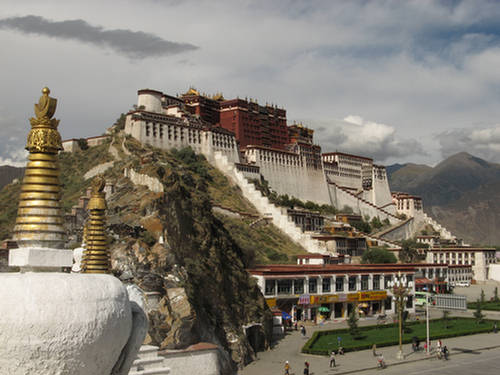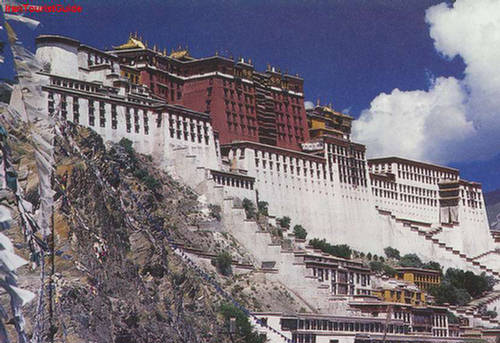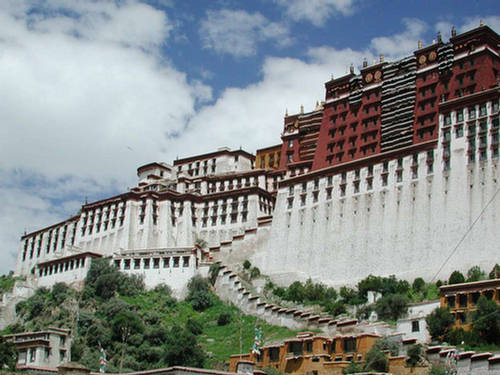
Thirteen stories of buildings containing over 1,000 rooms, 10,000 shrines and about 200,000 statues, soar 117 metres (384 ft) on top of Marpo Ri, the "Red Hill", rising more than 300 m (about 1,000 ft) in total above the valley floor. Tradition has it that the three main hills of Lhasa represent the "Three Protectors of Tibet." Chokpori, just to the south of the Potala, is the soul-mountain (bla-ri) of Vajrapani, Pongwari that of Manjushri, and Marpori, the hill on which the Potala stands, represents Chenresig or Avalokiteshvara.
The building measures 400 metres east-west and 350 metres north-south, with sloping stone walls averaging 3 m. thick, and 5 m. (more than 16 ft) thick at the base, and with copper poured into the foundations to help proof it against earthquakes. "The Potala gives the impression not of having been built by man but have grown there, so perfectly does it fit in with its surroundings.

It has the pleasing lack of symmetry of a great tree or mountain, yet this apparent aimlessness is focused, first by the red central block and then by the golden pavilions on the roof, so that the eye is naturally led from the less important to the essential, both visually and spiritually; for in so much as the gilded roofs over the mortal remains of the Dalai Lamas are the dominant figure of the architecture, so is the incarnate spirit of these rulers the very soul of Tibet.




